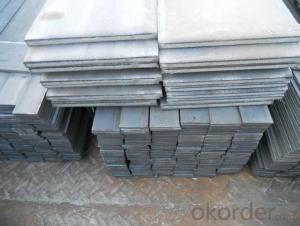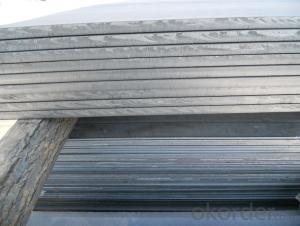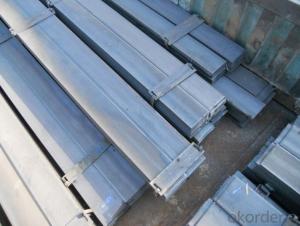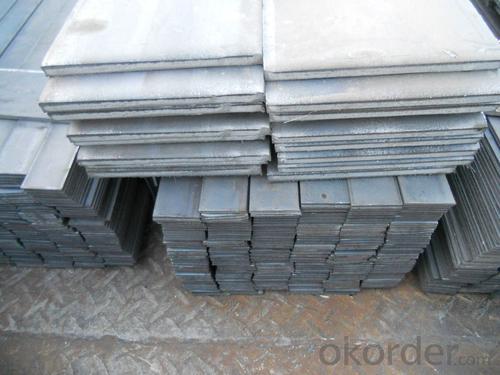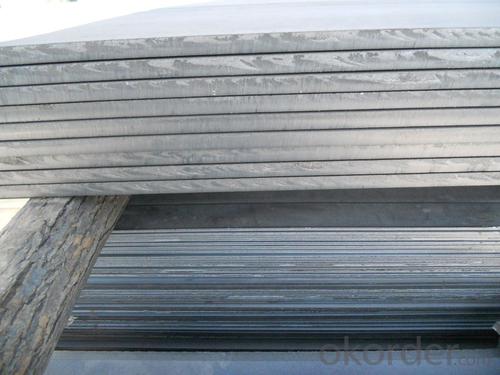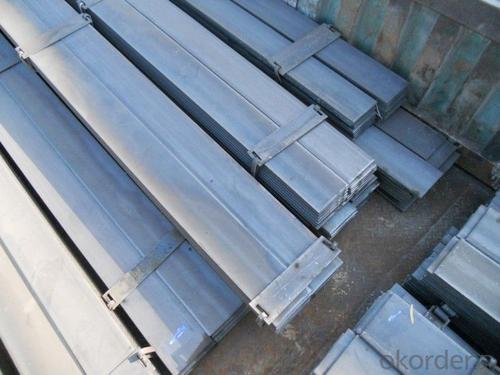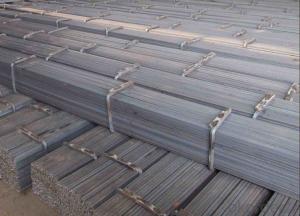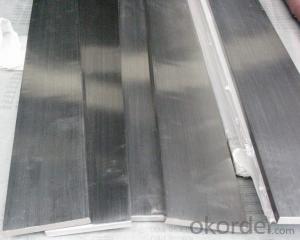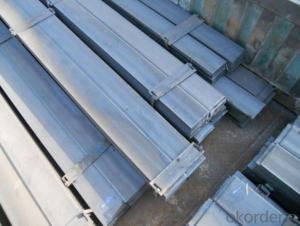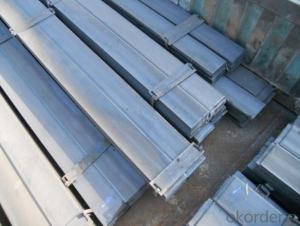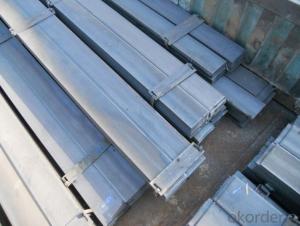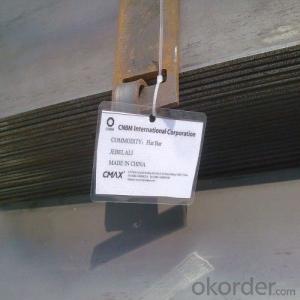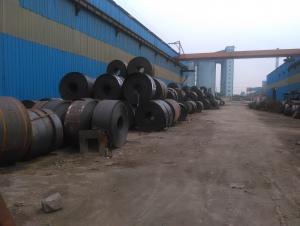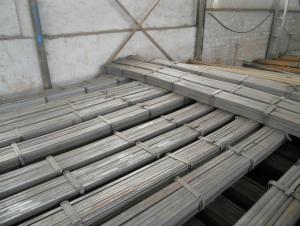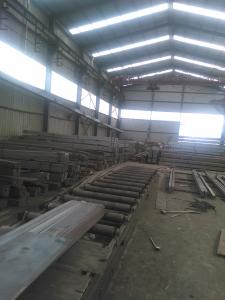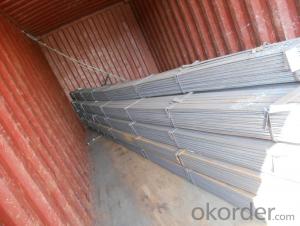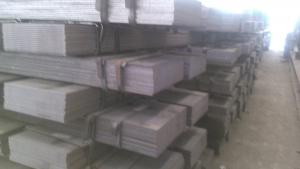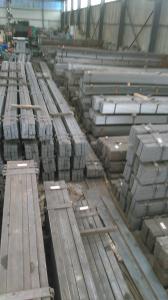Seel Flat Bars with Material Grade Q235 and Good price
- Loading Port:
- Tianjin
- Payment Terms:
- TT OR LC
- Min Order Qty:
- 25 m.t.
- Supply Capability:
- 10000 m.t./month
OKorder Service Pledge
OKorder Financial Service
You Might Also Like
Product Description:
OKorder is offering high quality Flat Bar at great prices with worldwide shipping. Our supplier is a world-class manufacturer of steel, with our products utilized the world over. OKorder annually supplies products to European, North American and Asian markets. We provide quotations within 24 hours of receiving an inquiry and guarantee competitive prices.
Product Applications:
Flat Bars are ideal for structural applications and are widely used in the construction of buildings and bridges, and the manufacturing, petrochemical, and transportation industries.
Product Advantages:
OKorder's Flats Barare durable, strong, and resist corrosion.
Main Product Features:
· Premium quality
· Prompt delivery & seaworthy packing (30 days after receiving deposit)
· Corrosion resistance
· Can be recycled and reused
· Mill test certification
· Professional Service
· Competitive pricing
Product Specifications:
Manufacture: Hot Rolled
Grade: Q195 – 235
Certificates: ISO, SGS, BV, CIQ
Length: 6m – 12m, as per customer request
Packaging: Export packing, nude packing, bundled
Chemical composition of Q235
Alloy No | Grade | Element(%) | ||||
C
| Mn
| S
| P
| Si
| ||
Q235
|
B
|
0.12—0.20 |
0.3—0.7 |
≤0.045 |
≤0.045
|
≤0.3
|
Physical properties of Q235
Alloy No | Grade | Yielding strength point(Mpa) | Tensile strength (Mpa) | Elongation after fracture(%) | ||||||
Thickness (mm) | Thickness (mm) | |||||||||
≤16 | >16--40 | >40--60 | >60--100 | ≤16 | >16--40 | >40--60 | >60--100 | |||
≥ | ≥ | |||||||||
Q235 |
B |
235 |
225 |
215 |
205 |
375--500 |
26 |
25 |
24 |
23 |
FAQ:
Q1: How soon can we receive the product after purchase?
A1: Within three days of placing an order, we will begin production. The specific shipping date is dependent upon international and government factors, but is typically 7 to 10 workdays.
Q2: How do we guarantee the quality of our products?
A2: We have established an advanced quality management system which conducts strict quality tests at every step, from raw materials to the final product.
Q3: What is the normal tolerance of Hot Rolled Mild Steel flat bar?
A3: Normally 7%-9%, but we can also produce the goods according to the customers' requests.
Images:
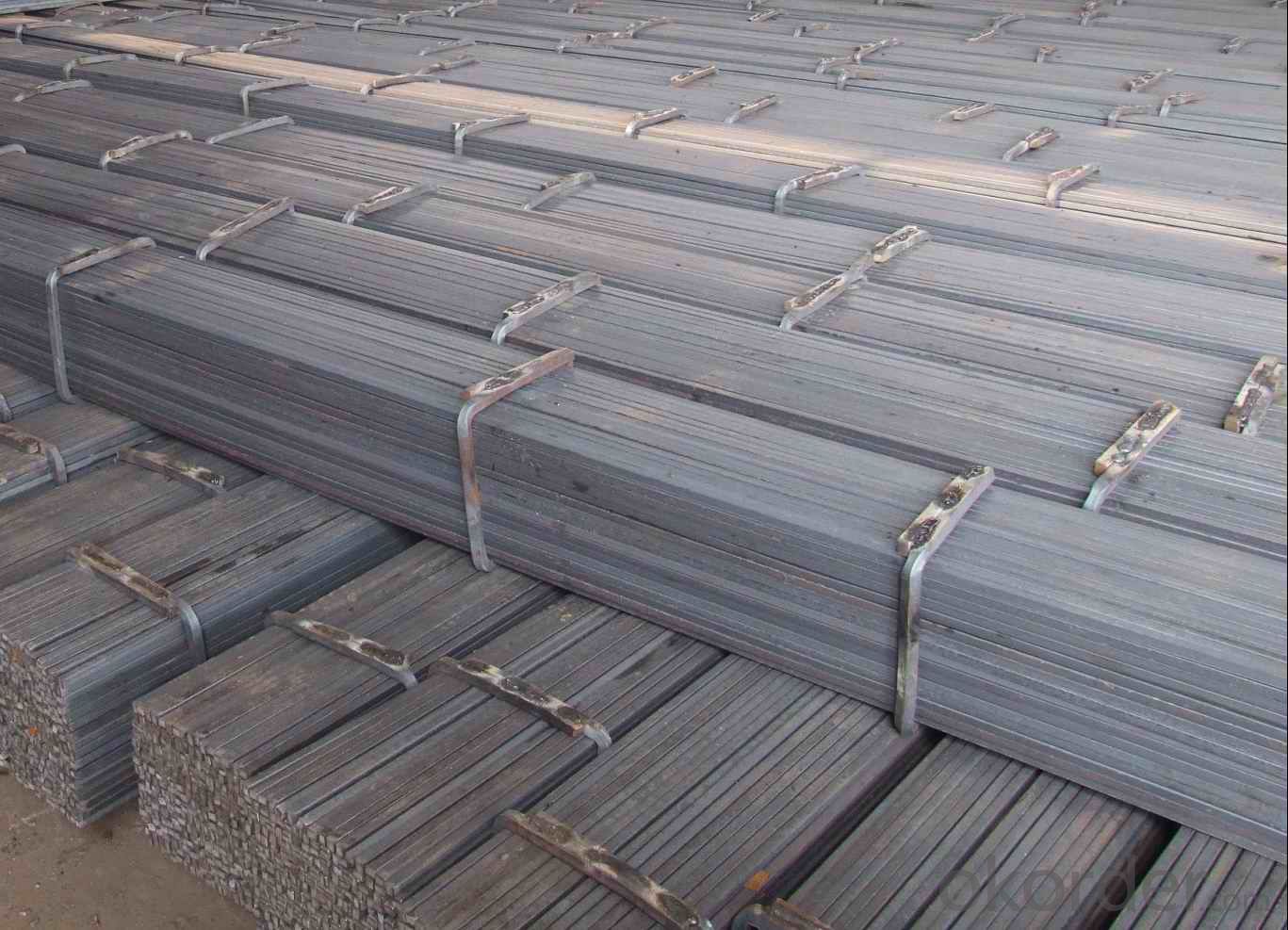
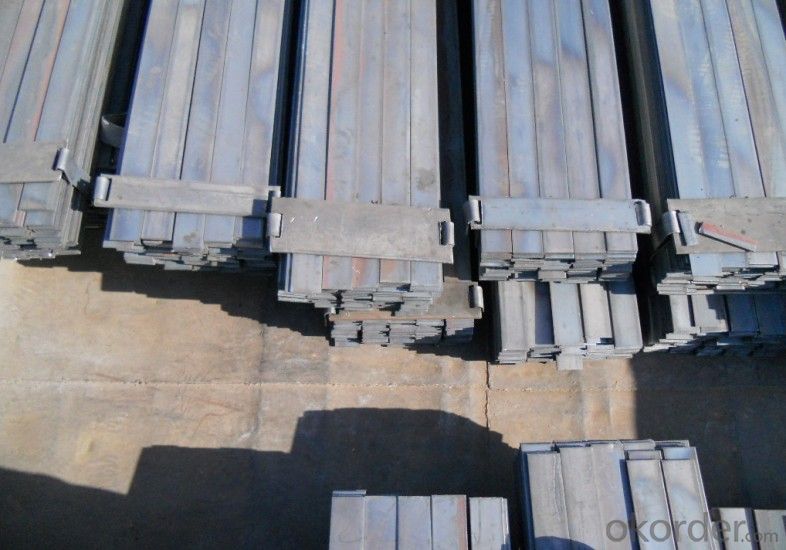
- Q: What is the maximum length-to-thickness ratio for steel flat bars?
- The maximum length-to-thickness ratio for steel flat bars is typically around 200:1.
- Q: What are the tolerances for steel flat bars?
- The tolerances for steel flat bars can vary depending on the specific requirements and standards set by the manufacturer or customer. However, in general, the tolerances for steel flat bars are typically measured in terms of thickness, width, and length. For the thickness tolerance, it is common to have a specific range within which the thickness of the flat bar should fall. This range can vary depending on the grade and type of steel being used, but it is usually specified in terms of a plus or minus value. Similarly, the width tolerance refers to the acceptable variation in the width of the steel flat bar. This tolerance is usually specified as a plus or minus value, allowing for a certain range of deviation from the desired width. Finally, the length tolerance determines the acceptable variation in the length of the steel flat bar. This tolerance is often specified in terms of a maximum or minimum length deviation from the desired length. It is important to note that the specific tolerances for steel flat bars can vary depending on the application and industry standards. Therefore, it is crucial to consult the relevant specifications or standards provided by the manufacturer or customer to determine the precise tolerances required for a particular steel flat bar.
- Q: How do you store steel flat bars to prevent damage?
- To store steel flat bars and prevent damage, there are a few key steps you can follow: 1. Choose a suitable storage area: Ensure the storage area is clean, dry, and well-ventilated. Avoid storing the flat bars in areas prone to moisture or extreme temperature fluctuations. If possible, designate a specific area for storing steel flat bars to minimize the risk of damage. 2. Use proper stacking techniques: When storing multiple steel flat bars, stack them horizontally on a flat surface. Make sure to align the bars properly, ensuring they are parallel to each other. Avoid stacking them too high to prevent excessive weight and potential bending or warping. 3. Employ appropriate supports: Place timber or rubber supports between the layers of stacked flat bars. These supports prevent direct contact between the bars, reducing the risk of scratches or surface damage. Using supports also helps distribute the weight evenly and maintain the flatness of the bars. 4. Protect against moisture: Moisture can cause rust or corrosion on steel flat bars. To prevent this, consider using moisture-absorbing materials such as silica gel packets or desiccants in the storage area. Additionally, cover the stacked bars with a plastic sheet or tarp to shield them from moisture and humidity. 5. Keep an organized inventory: Maintain a proper record of the stored steel flat bars, including their dimensions, grades, and quantities. Regularly inspect the inventory to identify any signs of damage, rust, or deformation. This will enable you to address any issues promptly and prevent further damage. 6. Handling and transportation precautions: When moving or transporting steel flat bars, use appropriate lifting equipment such as forklifts or cranes to avoid excessive stress on the bars. Always handle them with care and avoid dropping or dragging them, as this can cause dents, scratches, or deformation. By following these guidelines, you can ensure the proper storage of steel flat bars and minimize the risk of damage, preserving their quality and integrity.
- Q: Can steel flat bars be used in the construction of buildings?
- Yes, steel flat bars can be used in the construction of buildings. Steel flat bars are commonly used in construction due to their strength, durability, and versatility. They provide structural support and are often used for framing, reinforcement, and support systems in buildings. Steel flat bars can be easily cut, welded, and shaped to meet the specific requirements of a construction project. Additionally, they are resistant to corrosion, fire, and pests, making them an ideal choice for long-lasting and sturdy building construction.
- Q: Can steel flat bars be used for manufacturing appliances?
- Yes, steel flat bars can be used for manufacturing appliances. Steel is a versatile and durable material that is commonly used in appliance manufacturing due to its strength and resistance to corrosion. Steel flat bars can be used for various applications in appliance manufacturing, such as forming the structure, providing support, or creating brackets and frames. The flat shape of the bars allows for easy fabrication and shaping, making them suitable for different appliance designs. Additionally, steel flat bars can be easily welded or joined together, making them a convenient choice for appliance manufacturing.
- Q: Are steel flat bars suitable for making electrical enclosures or cabinets?
- Yes, steel flat bars are suitable for making electrical enclosures or cabinets. Steel is a durable and strong material that offers excellent protection and security for electrical components. The flat bars provide a sturdy framework for the enclosure or cabinet, ensuring stability and support. Additionally, steel is resistant to heat, corrosion, and impact, making it an ideal choice for housing electrical equipment. It also has good electrical conductivity, which is crucial in maintaining proper grounding and preventing electrical hazards. Moreover, steel flat bars can be easily customized and fabricated to meet specific size and design requirements, allowing for flexibility in creating the enclosures or cabinets. Overall, steel flat bars are a reliable and practical option for constructing electrical enclosures or cabinets due to their strength, durability, and electrical properties.
- Q: What are the different techniques for joining steel flat bars together?
- There are several techniques for joining steel flat bars together, depending on the specific requirements and applications. Some of the common techniques include welding, bolting, riveting, and adhesive bonding. 1. Welding: Welding is one of the most widely used techniques for joining steel flat bars. It involves melting the edges of the flat bars and fusing them together using heat. Different welding methods, such as arc welding, gas welding, and laser welding, can be used depending on the thickness and composition of the steel bars. 2. Bolting: Bolting is an effective technique for joining steel flat bars, especially when disassembly is required. It involves drilling holes in the flat bars and using bolts, nuts, and washers to secure them together. Bolting provides a strong and reliable connection but may require periodic maintenance to prevent loosening. 3. Riveting: Riveting involves driving a metal pin or rivet through holes drilled in the steel flat bars. The rivet is then deformed on the opposite side, creating a permanent connection. Riveting provides a strong joint and is commonly used in structural applications where high strength and rigidity are required. 4. Adhesive bonding: Adhesive bonding is a technique where a strong adhesive is applied between the surfaces of the steel flat bars to create a bond. This method is suitable for joining thin flat bars or when welding or drilling is not feasible. Adhesive bonding provides a clean and aesthetically pleasing joint but may have limitations in terms of strength and durability. 5. Mechanical fasteners: Mechanical fasteners, such as clips, clamps, or brackets, can be used to join steel flat bars together. These fasteners are designed to hold the flat bars in place without the need for welding or drilling. Mechanical fasteners offer ease of installation and disassembly but may not provide the same level of strength as welding or riveting. It is important to select the appropriate joining technique based on factors such as the intended application, load requirements, design constraints, and the properties of the steel flat bars.
- Q: Can steel flat bars be used in architectural applications?
- Yes, steel flat bars can be used in architectural applications. They are often used for structural support, framing, and decorative purposes in building designs. Steel flat bars offer durability, strength, and versatility, making them suitable for various architectural applications such as railings, stairs, window frames, and facades.
- Q: Are steel flat bars suitable for making architectural screens or grilles?
- Yes, steel flat bars are suitable for making architectural screens or grilles. They are strong, durable, and can be easily manipulated to create intricate designs. Additionally, steel is a versatile material that can withstand various weather conditions, making it an ideal choice for outdoor architectural features.
- Q: Can steel flat bars be painted or coated?
- Yes, steel flat bars can be painted or coated. Steel is a versatile material that can be easily painted or coated to enhance its appearance, protect it from corrosion, or improve its resistance to wear and tear. Painting steel flat bars not only adds aesthetic value but also acts as a protective layer against rust and other environmental factors. Similarly, applying a coating such as powder coating, galvanizing, or electroplating can further enhance the durability and longevity of steel flat bars. These coatings provide additional protection against corrosion and can also offer specific functional properties, such as heat resistance or chemical resistance. Therefore, painting or coating steel flat bars is a common practice to improve their appearance and enhance their performance in various applications.
Send your message to us
Seel Flat Bars with Material Grade Q235 and Good price
- Loading Port:
- Tianjin
- Payment Terms:
- TT OR LC
- Min Order Qty:
- 25 m.t.
- Supply Capability:
- 10000 m.t./month
OKorder Service Pledge
OKorder Financial Service
Similar products
Hot products
Hot Searches
Related keywords
